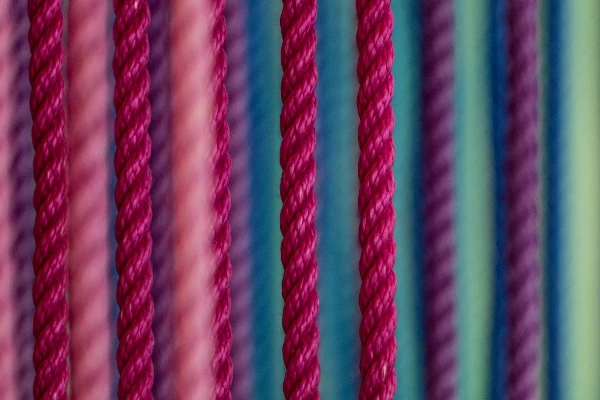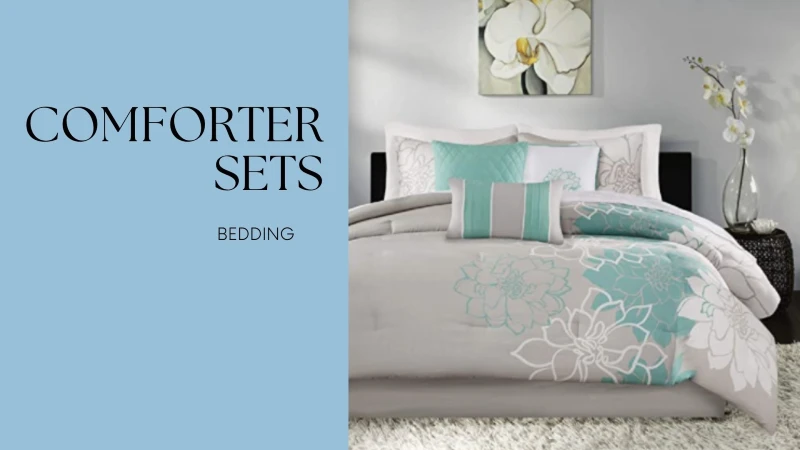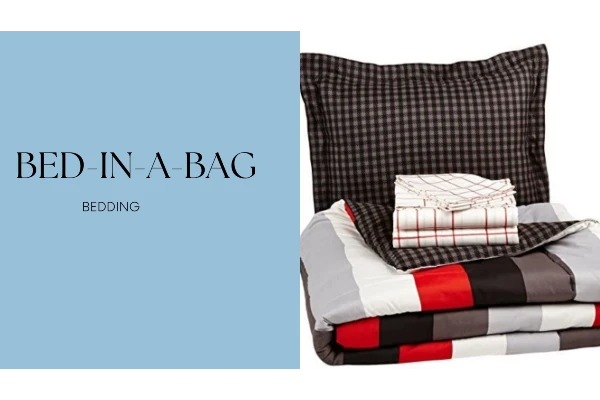Disclosure: This post may contain affiliate links, meaning we get a commission if you decide to make a purchase through our links, at no cost to you. Please read our disclosure for more info.
When shopping for sheets, “thread count” is the phrase that pops up more than almost anything else. It’s plastered across online listings, highlighted on tags, and mentioned in almost every bedding guide you’ll find. But what does it really mean? More importantly, does a higher thread count guarantee better sleep? The short answer: not necessarily. Choosing bedding isn’t about chasing the highest number; it’s about understanding the factors that contribute to comfort, durability, and quality.
This guide will break down thread count, ply, materials, and weaving techniques—and explain how these factors work together so you can confidently pick sheets that make your bed a haven. By the end, you’ll be equipped to separate marketing hype from genuine quality.
In This Post:
🧵 What Thread Count Actually Means
Thread count is a measure of the number of threads woven into one square inch of fabric. These threads run both horizontally (called the “weft”) and vertically (called the “warp”). For example, a sheet with a thread count of 300 has 150 threads running vertically and 150 horizontally—or 300 threads per square inch.
Higher thread counts are often marketed as “luxurious” or “ultra-soft,” but the truth is more nuanced. Thread count alone does not guarantee comfort, smoothness, or durability. Think of it like ingredients in a recipe: the number alone doesn’t define the taste—you have to consider quality, combination, and technique.
One key factor to understand is the ply of the threads. While thread count counts the total threads per square inch, ply refers to how many threads are twisted together to make a single strand. This detail is often overlooked but is critical to the feel and strength of your sheets.
🔍 Ply: Single-Ply vs. Double-Ply
Ply may sound complicated, but it’s actually simple once you break it down.
- Single-Ply: These sheets are made with a single thread per strand. They tend to be lighter, airier, and more breathable, making them ideal for warm climates or people who sleep hot. Single-ply sheets usually have a smoother, softer texture right from the start and often become even more comfortable with washing.
- Double-Ply: Double-ply threads are created by twisting two or more threads together. This increases the density of the fabric, which can make sheets feel heavier and more substantial. While some marketing materials tout extremely high thread counts achieved through multi-ply twisting, it’s important to know that high numbers achieved this way don’t always improve comfort—they simply make the fabric denser.
In other words, a 600-thread-count double-ply sheet might feel similar to a 300-thread-count single-ply sheet, but it’s not automatically superior. Your comfort preferences, not just numbers, should guide your choice.
🌿 Material Matters More Than Numbers
While thread count is important, the type of material has an even greater influence on feel, durability, and longevity. Here are some common materials and what they offer:
Egyptian Cotton
Renowned worldwide, Egyptian cotton has extra-long fibers that produce smoother, softer threads. Sheets made from 100% Egyptian cotton tend to be luxurious yet breathable. They can be more expensive, but for many, the comfort and durability are worth it.
Supima Cotton
Supima is a premium American-grown cotton. Like Egyptian cotton, it has long fibers that result in soft, durable sheets. Supima sheets are strong, resist pilling, and maintain their luxurious feel over years of use.
Bamboo
Bamboo sheets are silky, naturally hypoallergenic, and moisture-wicking, making them ideal for sensitive skin or hot sleepers. They are also eco-friendly since bamboo is a fast-growing, renewable resource. Some bamboo fabrics are blended with cotton to increase softness and durability.
Microfiber
Microfiber is a synthetic option, usually made from polyester. These sheets are soft, lightweight, and often more budget-friendly than natural fibers. Microfiber resists wrinkles and dries quickly, but it may not be as breathable as cotton or bamboo.
🧠 How to Avoid Marketing Hype
Here’s where it gets tricky: many manufacturers inflate thread counts to make their sheets appear more luxurious. This is often done by using multi-ply threads, which technically increases the thread count but doesn’t necessarily improve softness or durability.
High thread counts achieved this way can sometimes result in sheets that feel heavy or less breathable. Instead of obsessing over numbers, pay attention to the fiber type, weave, and overall construction. Look for reputable brands that provide transparent information about their materials and thread counts.
🌟 Weave Types and Their Impact
Beyond thread count and fiber, the weave of your sheets greatly affects comfort and longevity. The two most common weaves are:
- Percale: A tight, plain weave that feels crisp and lightweight. Percale sheets are breathable and ideal for hot sleepers or warmer climates. They tend to have a matte finish and a clean, tailored look.
- Sateen: A weave that creates a silky, smooth surface with a subtle sheen. Sateen sheets are heavier than percale, drape beautifully, and feel luxurious against the skin. They may be slightly less breathable, making them better suited for cooler climates or those who prefer a warmer feel.
🛏️ Finding Sheets That Fit Your Needs
Comfort is subjective, and there is no one-size-fits-all answer. When selecting sheets, consider:
- Climate: Hot sleepers may prefer lightweight, breathable percale or bamboo sheets. Those in cooler climates might enjoy the cozy warmth of sateen.
- Skin Sensitivity: Natural fibers like cotton and bamboo are hypoallergenic and gentler on sensitive skin compared to synthetic microfiber.
- Durability: Long-staple cotton fibers like Egyptian or Supima last longer and maintain softness over years.
- Feel Preference: Do you like crisp sheets that snap when you make your bed, or silky sheets that feel like a hug? Choose a weave and fiber that match your tactile preferences.
If possible, feel the sheets in-store or order swatches online. There’s nothing worse than investing in sheets that look perfect on paper but don’t feel right in real life.
💡 Other Considerations
- Thread Count Range: For most people, a thread count between 300 and 600 is ideal. Below 200, sheets may feel rough and wear quickly. Above 600, you might not notice a significant difference unless you prefer very dense, heavy sheets.
- Maintenance: Some materials require more care than others. Cotton sheets are easy to wash and get softer over time. Bamboo may need cold water washing to maintain shape. Microfiber is extremely low-maintenance.
- Budget: Luxury sheets can be expensive, but they are an investment in better sleep. Consider balancing cost, quality, and feel—sometimes paying a bit more upfront means enjoying sheets for years.
✅ Tips for Choosing the Best Sheets
- Don’t fixate on thread count alone. Look at fiber, ply, and weave.
- Read reviews carefully. Real customer experiences often reveal true comfort and durability.
- Consider the climate and personal comfort. Not everyone benefits from the same type of sheet.
- Test if possible. Feeling the fabric and checking drape can prevent disappointment.
- Invest in quality. Cheaper sheets may save money short-term but can wear out fast, making luxury sheets a smarter choice in the long run.
🌙 The Bottom Line
Thread count is just one piece of the puzzle when it comes to luxurious, comfortable sheets. Ply, fiber type, weave, and personal preferences all play equally important roles. By understanding what thread count really measures—and what it doesn’t—you can make smarter decisions and pick bedding that transforms your sleep.
Investing in high-quality sheets isn’t just about appearances; it’s about comfort, durability, and overall well-being. A set of sheets that feels amazing against your skin can dramatically improve your sleep quality, mood, and even health.
Whether you prefer the crisp coolness of percale, the silky smoothness of sateen, or the eco-friendly luxury of bamboo, the right sheets make every night feel like a retreat. Take the time to explore materials, weave types, and personal comfort preferences. Your sleep—and your mornings—will thank you.




